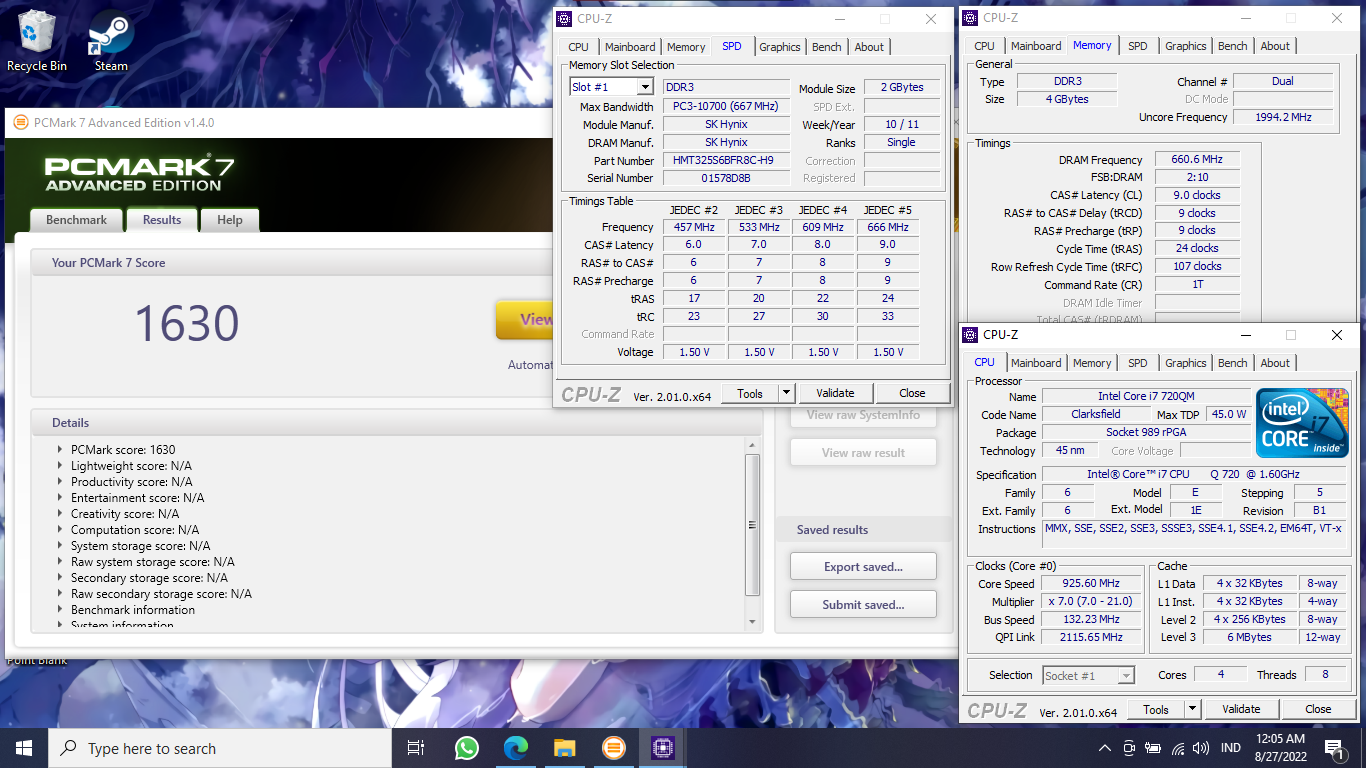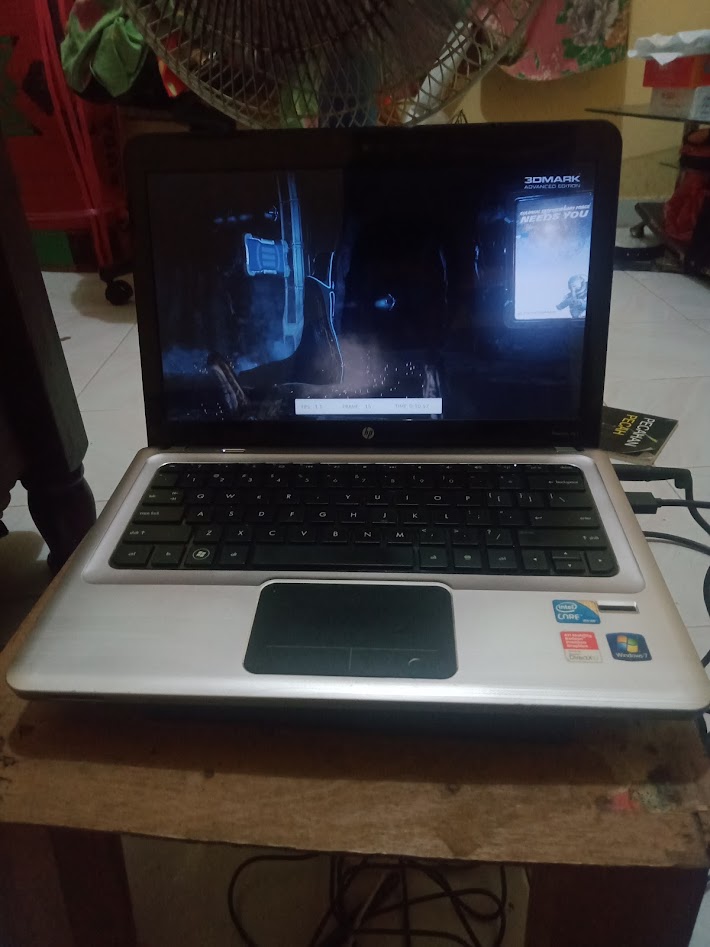PCMark 7 score 1630 marks with a i7-720QM
Thursday, 01 January 1970 07:00 | Update at null
Media Gallery
Screenshot

Device, Setup, etc



URL
https://hwbot.org/submission/5068592https://bit.ly/3CUSfp1
Information Detail
Hardware: Intel Core i7 720QM
Specs:CPUID : Intel(R) Core(TM) i7 CPU Q 720 @ 1.60GHz
Architecture : x86
Codename : Clarksfield
L3 Cache : 6MB
Clock : 1.60GHz - 2.80GHz
Core/Thread : 4/8
TDP : 45W
Technology : 45nm
Socket : PGA988
IGPU : -
See more specification...
Software: PCMark 7
Score: 1630 marks
About: PCMark 7PCMark 7 is benchmark software designed by Futuremark (now UL Benchmarks) to measure the overall performance of Windows 7-based systems. This benchmark assesses various important aspects of computer performance with a primary focus on the overall user experience, rather than individual components such as the CPU or GPU.
Unlike other synthetic benchmarks that only test one specific aspect, PCMark 7 uses real-world usage scenarios to test system performance. This includes tests such as web browsing, image processing, video editing, light gaming, data encryption, and virus scanning. All these tests are organized into various test suites, including Lightweight, Productivity, Entertainment, Creativity, Computation, and Storage.
The final score from PCMark 7 reflects the system's ability to handle everyday workloads commonly used by home and professional users. Therefore, this benchmark is ideal for evaluating the performance of laptops, desktops, or workstations in real-world contexts, not just theoretical scenarios.
The advantage of PCMark 7 lies in its ability to test not only the CPU and GPU, but also storage performance (HDD/SSD), memory speed, and overall system efficiency. This makes it an ideal tool for comparing devices in the context of general productivity and multimedia consumption.
Although designed for Windows 7, PCMark 7 remains a relevant historical benchmark tool, especially when testing older devices or comparing older systems with newer ones for documentation, archiving, or research purposes.
The Intel Core i7-720QM, launched in Q3 2009, was one of the first mobile quad-core processors to feature Intel's Nehalem microarchitecture, specifically the Clarksfield variant. Targeted at high-performance laptops, such as gaming machines and mobile workstations, the i7-720QM brought 4 physical cores and 8 threads to the mobile platform, thanks to Hyper-Threading Technology providing a significant boost in multi-threaded workloads like video editing, 3D rendering, and other professional-grade applications. The processor runs at a base clock speed of 1.6 GHz, but it can dynamically increase up to 2.8 GHz using Intel Turbo Boost, depending on thermal headroom and power availability.
Manufactured using a 45nm process, the i7-720QM has a TDP of 45W, which is quite high by today's mobile CPU standards. This thermal demand necessitated more robust cooling solutions in laptops that featured the chip. Unlike modern CPUs, the i7-720QM does not come with integrated graphics, which means systems based on this processor require a dedicated GPU often from AMD or NVIDIA for graphics processing and display output. As such, it was typically paired with mid-to-high-end discrete graphics cards in its time, making it a solid choice for gaming and multimedia laptops in the late 2000s and early 2010s.
While the Core i7-720QM was a powerhouse during its release, its performance and efficiency are significantly outpaced by modern CPUs built on smaller nodes and with higher IPC (Instructions Per Clock). Nevertheless, legacy laptops using the i7-720QM can still be viable for basic computing tasks like web browsing, document editing, or watching videos especially if paired with an SSD upgrade and increased RAM. Users running Windows 10 on such systems may experience some limitations, but with proper optimization and lightweight software, the CPU can still deliver a usable experience in non-demanding environments.
Hardware Detail:
Device: HP Pavilion dv3-4054TX
RAM: 4GB DDR3 Single Channel
OS: Windows 7, Windows 10
* Not Avaiable
